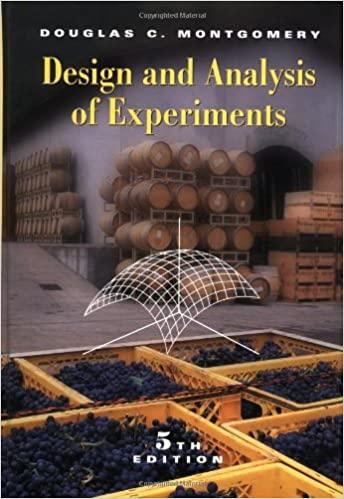Question:
Heat treating is often used to carburize metal parts, such as gears. The thickness of the carburized layer is considered a crucial feature of the gear and contributes to the overall reliability of the part. Because of the critical nature of this feature, two different lab tests are performed on each furnace load. One test is run on a sample pin that accompanies each load. The other test is a destructive test, where an actual part is cross-sectioned. This test involves running a carbon analysis on the surface of both the gear pitch (top of the gear tooth) and the gear root (between the gear teeth). Table 12-7 shows the results of the pitch carbon analysis test for 32 parts. The regressors are furnace temperature (TEMP), carbon concentration and duration of the carburizing cycle (SOAKPCT, SOAKTIME), and carbon concentration and duration of the diffuse cycle (DIFFPCT, DIFFTIME). (a) Fit a linear regression model relating the results of the pitch carbon analysis test (PITCH) to the five regressor variables.
(b) Estimate σ2.
(c) Find the standard errors se(Bj).
(d) Use the model in part (a) to predict PITCH when TEMP = 1650, SOAKTIME = 1.00, SOAKPCT = 1.10, DIFFTIME = 1.00, and DIFFPCT = 0.80.







